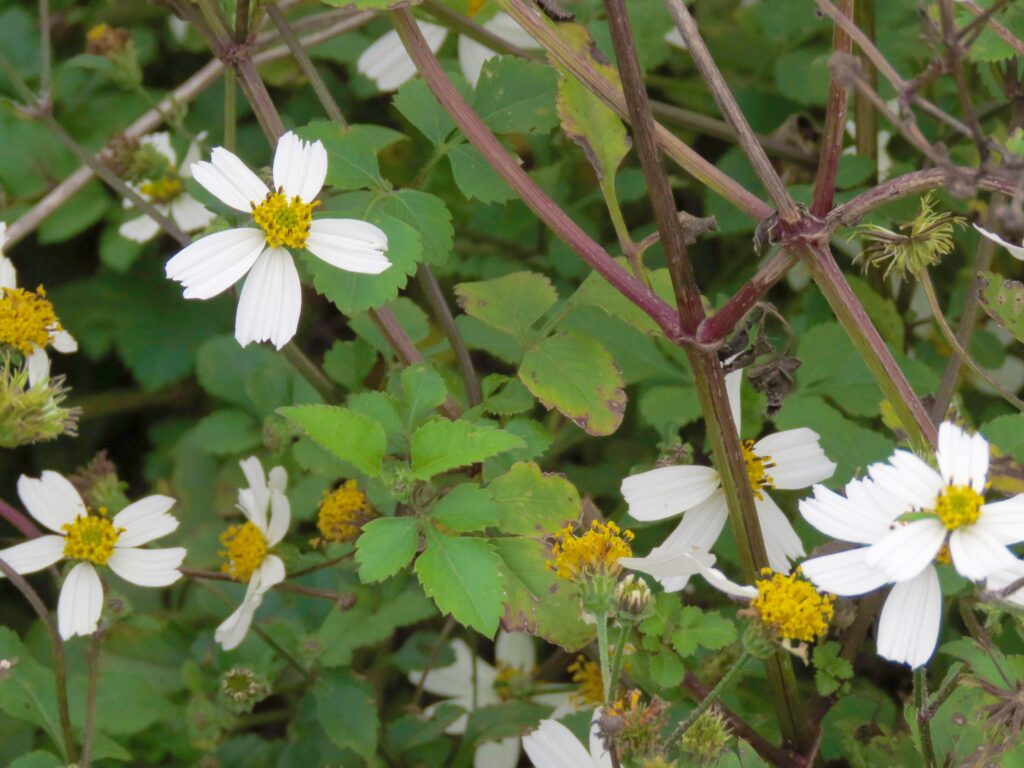



This week for Flora and Fauna Friday, we have a vigorous sub-tropical wildflower with late season staying power, White Beggarticks (Bidens alba).
White Beggarticks is native throughout Florida, the Gulf Coast, and the Sea Islands of Georgia and South Carolina, to include Edisto Island. It is an annual wildflower which typically grows knee to waist high. White Beggarticks is most abundant in damp, sunny, disturbed sites but can tolerate an extensive range of soil types and moisture levels as long as it gets enough sun. It is especially common on roadsides, power line right-of-ways, and the fringes of parking lots. It can easily be picked out from a crowd due to its inch wide daisy-like flowers with a golden center ringed in a half-dozen or so brilliant white, rectangular petals. As a sub-tropical wildflower, White Beggarticks doesn’t always follow the normal seasonal flowering convention most of our native plants do. Instead, it can bloom practically year-round if conditions are right but usually flower density peaks in mid-spring and mid-fall. Their flowers are a magnet for pollinators, especially our tropical migrant butterflies. As it has a tropical nature, this wildflower will just keep blooming, even well into winter, until a hard freeze kills it back. The seeds of White Beggarticks are shaped, and function, like a harpoon. Each of the long, thin seeds is tipped with two or three barbed prongs, which readily cling to fur and clothing. This is where the common name “beggar-ticks” comes from and this hitchhiking nature is how the seeds disperse themselves. As mammals wander past the plant, these seeds cling to their body only to be later brushed off many yards, or sometimes miles, away. There are even backwards facing barbs along the seed body itself, to aid in it later dislodging. White Beggarticks are very easy to grow and do well in cultivation. However, they are an extremely prolific seed producer and a rabid volunteer. Their clingy seeds can also be especially annoying to pick out of your jean legs and often result in the plants suddenly hopping to unexpected locales around the neighborhood. So think wisely before plugging one into your pollinator garden, as you may get a lot more of them than you bargained for!